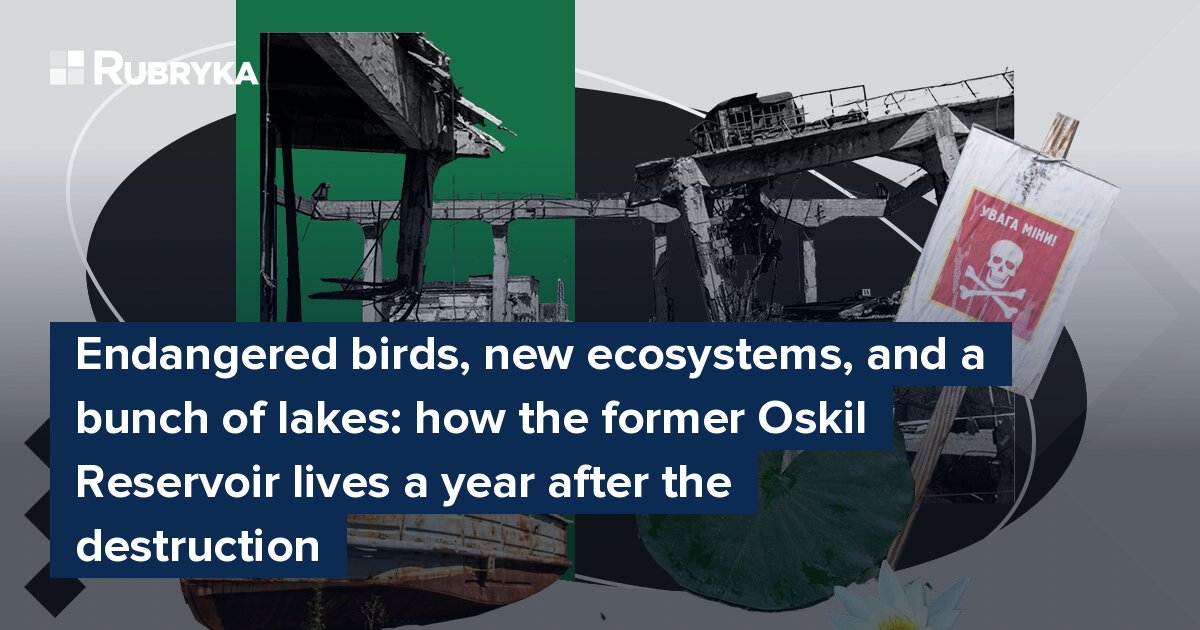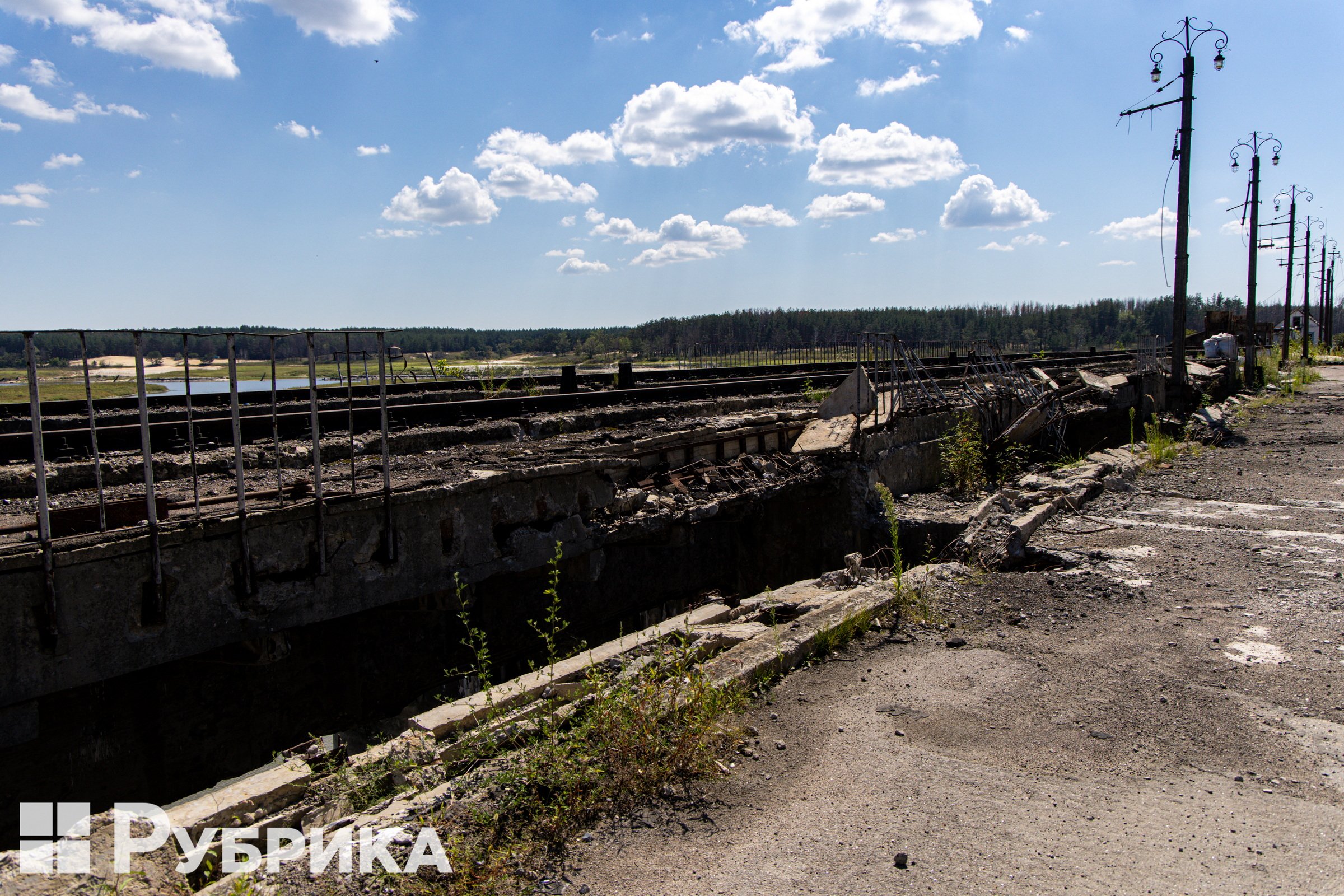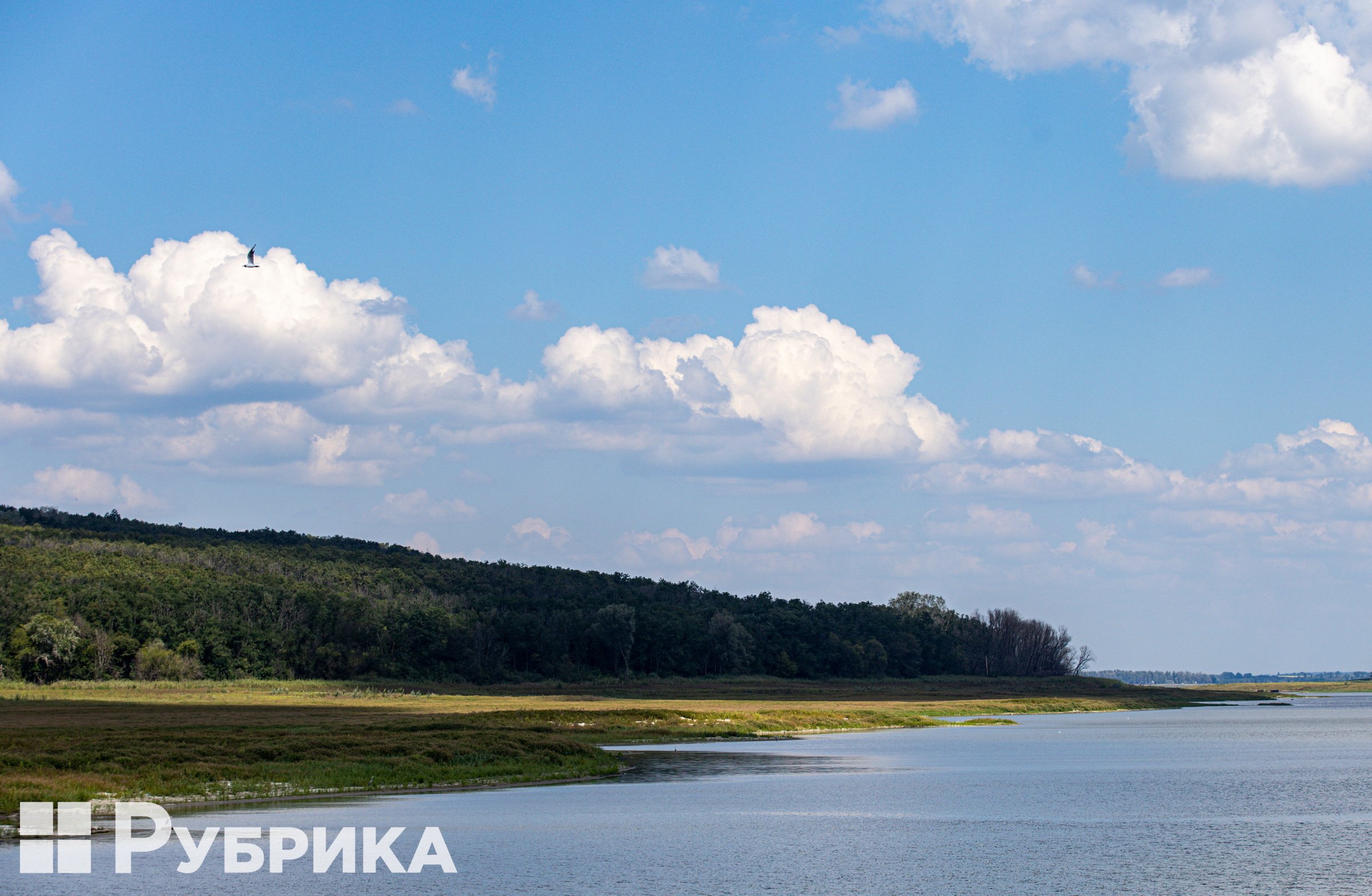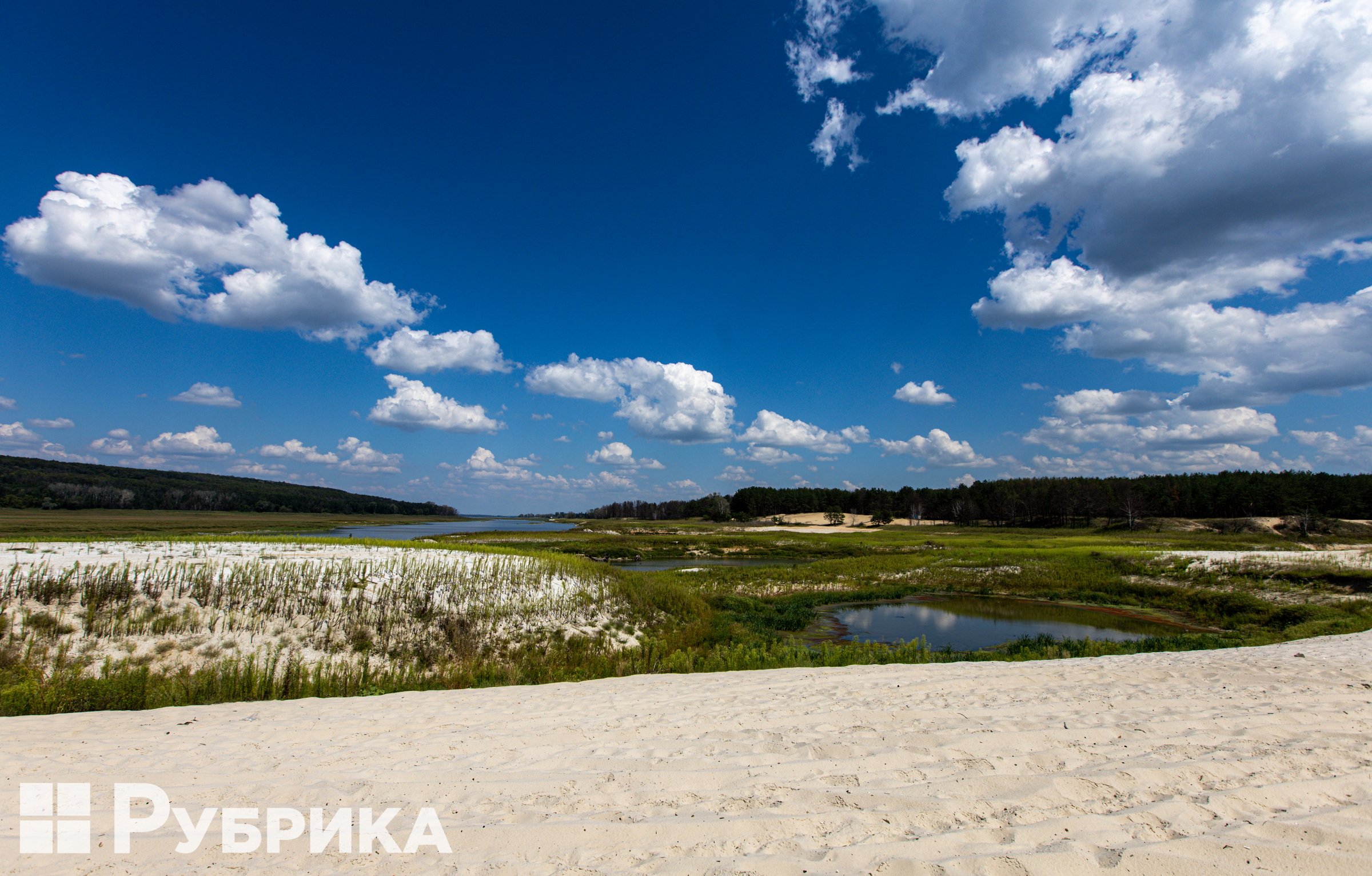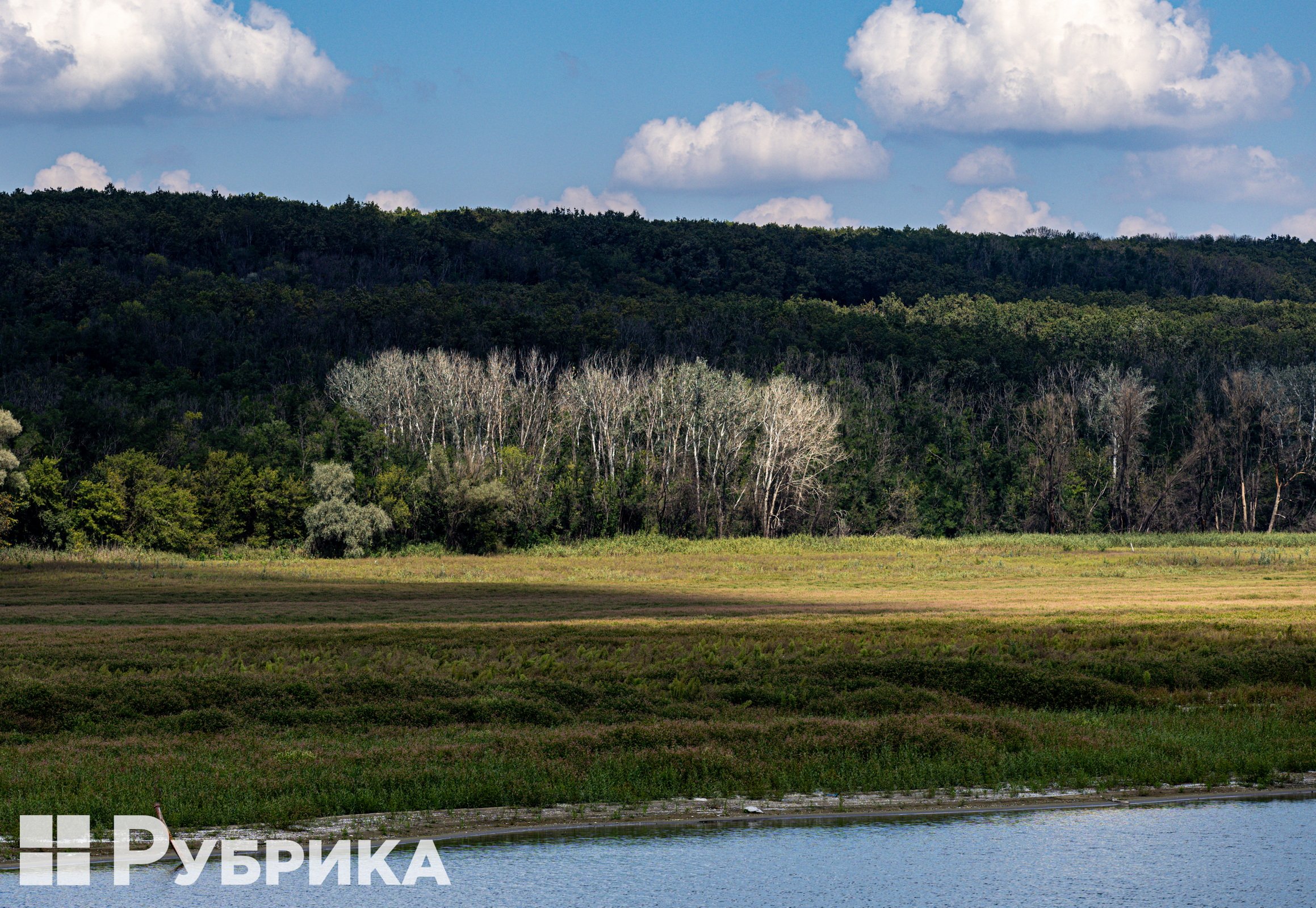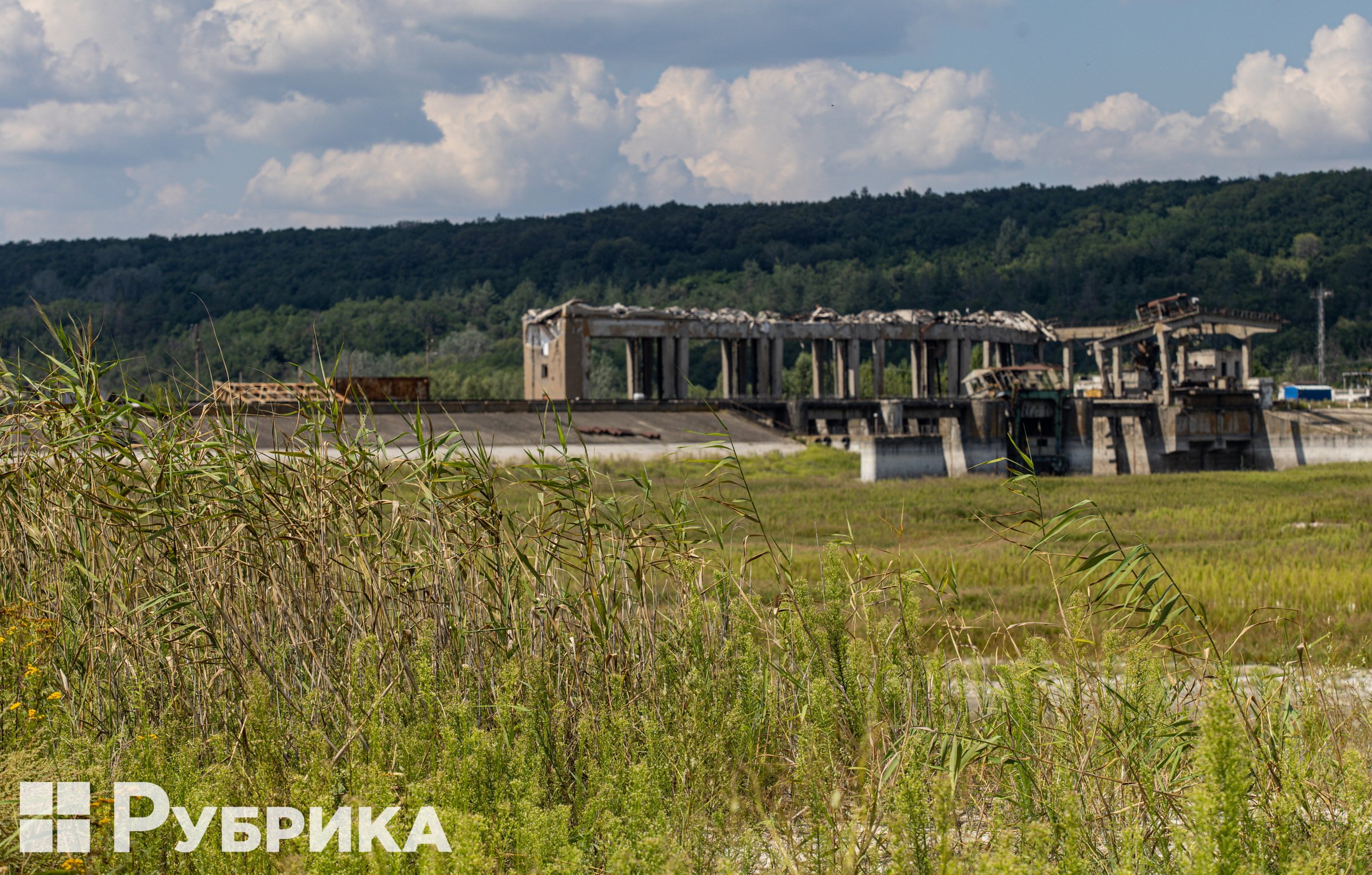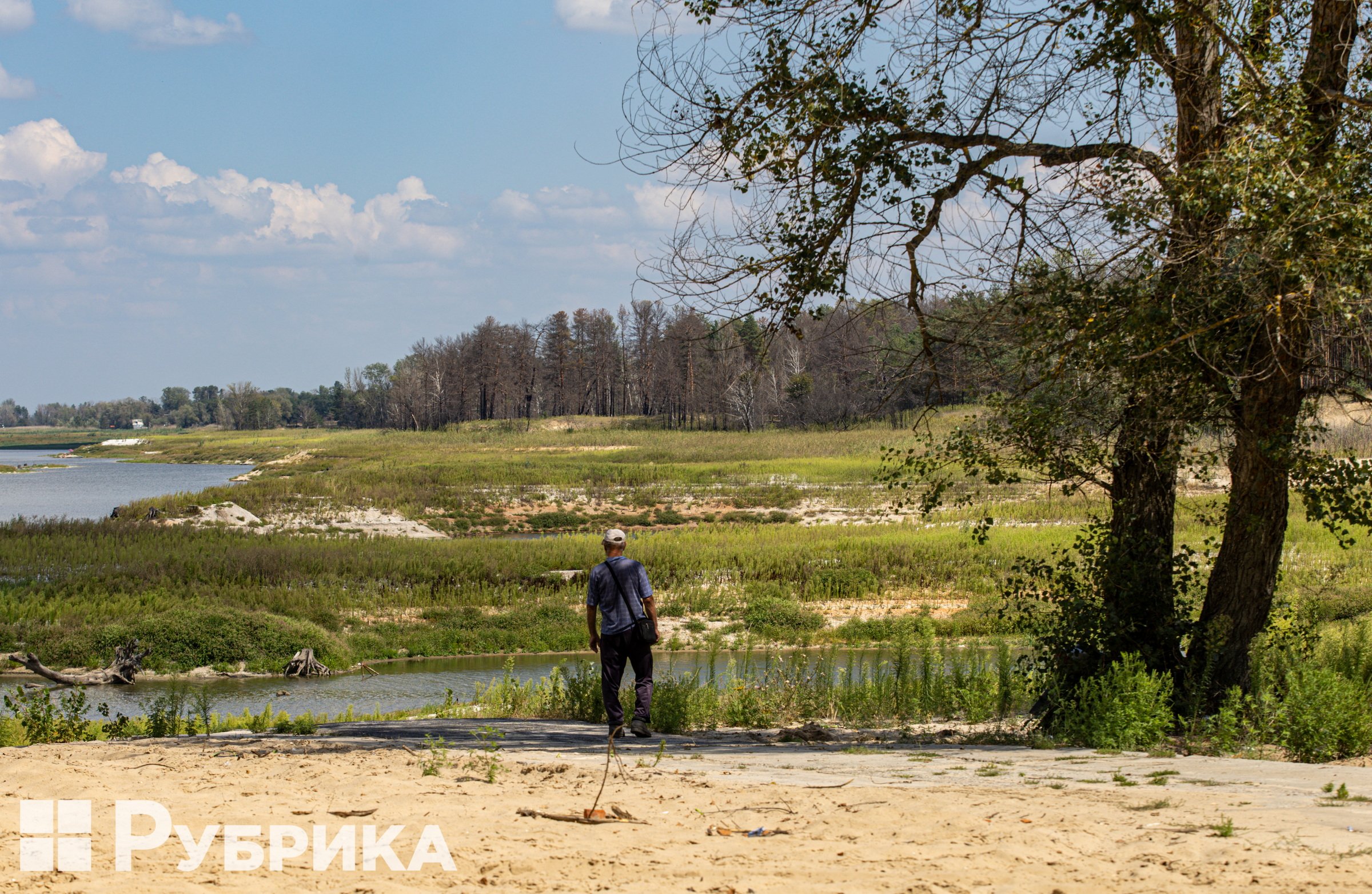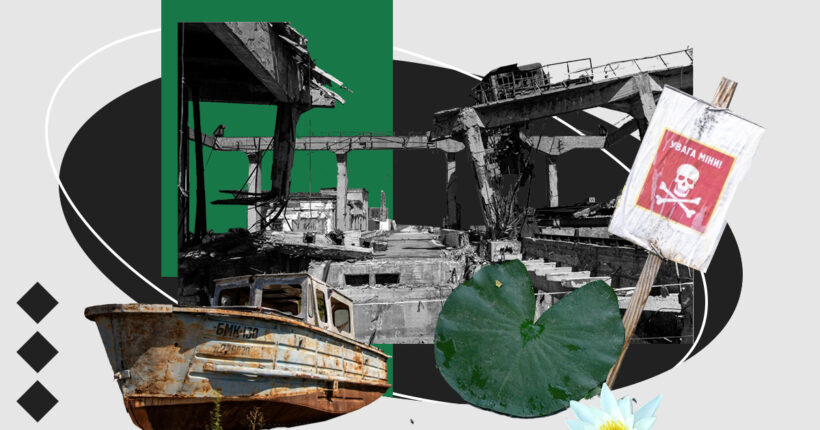
What is the problem?
The Oskil Reservoir, located in the Kharkiv region, was created by the Soviet authorities in 1957. Russia has carried out an ecological terrorist attack here twice. The first was in the last century, when a vast area of more than 122 square kilometers was flooded, and most flora and fauna were buried underwater. For many years, the Oskil Reservoir was a shallow body of water, with occasional deep places.
The water quality in the reservoir could not be called high: as a result of washing away the original bank, erosion occurred for a long time. Since these banks were covered mainly with steppe vegetation, it was impossible to stop the erosion processes even after the creation of protective anti-erosion plantations of robinia, the so-called white acacia. As a result, blooms due to excessive nutrient supply over many years have occasionally resulted in massive fish kills. There were terrible conditions for local fish species and more favorable conditions for the introduced. However, the nature of such an artificial reservoir was rich, so in 2010, the Chervonooskil Regional Landscape Park, a protected area, was formed on the reservoir's shore.
The local ecosystem was dealt a heavy blow a second time: in the spring of 2022, when the reservoir's dam was blown up, the process of restoring the ecosystems that existed before the reservoir's creation began. It would seem that the return of the former conditions of existence is a boon for many species of animals and plants. However, such a return to the natural state happened suddenly and had the effect of an explosion, both literally and figuratively.
The ecosystem that was formed for 60 years was destroyed again. More precisely, it very quickly transformed with the effect of a "cold shower" for species of plants and animals that have adapted to the conditions of the reservoir. The State Inspectorate estimated the monetary damages at ₴2.1 billion.
However, something unique happened — specialists of the Ukrainian Nature Conservation Group (UNCG), who recently made an expedition to the former Oskil Reservoir, saw that the explosive effect not only destroyed or radically transformed the old ecosystem of the reservoir: a completely new ecosystem was formed on the territory. The return of ecosystems of the Oskil valley to their original state has begun. This is a good sign. Similar processes may take place at the Kakhovka Reservoir.

View of the Oskil Reservoir from the destroyed hydroelectric dam.
Rubryka found a biologist who was one of the members of the expedition to Oskil. Stanislav Viter, a candidate of biological sciences and ornithologist, told Rubryka what is currently happening in the Oskil Reservoir and what prospects await the residents of the region in the new, restored, and liberated territories.


The first photo of Suspilne was taken in October 2022, and the second photo of Rubryka was taken in August 2023. The bare bottom of the Oskil Reservoir turned into meadows.
What is the solution?
Within a year, nature has returned to its former state at the former Oskil Reservoir
A year later, after the disaster, most of the former Oskil Reservoir was no longer covered with water. The part near the dam is completely dry, with dunes interspersed with small lakes, many channels, and the main Oskol river, as it once was, long before the reservoir was created.

The former Oskil Reservoir near the village of Horokhovatka, upstream.
Viter tells about an interesting fact: the old river can be recognized by stumps that have spent more than 70 years underwater. When the reservoir was filled, the willows along the stream were cut down, the stumps were flooded, and now they are visible again. Oskil flows clearly between them. Upstream of the Oskil, the picture is completely different: "The bottom of the former reservoir grew over very quickly in one year with reeds, rushes, and sedges and tall grass meadows were formed," said Viter.

New vegetation on the site of the former reservoir. The first overgrowth stage of the sand mounds near the dam is the weeds of the Canadian sedge. After them, in a few years, real meadow vegetation will grow.
During the expedition, botanists identified 63 species of vascular plants on the former bottom of the reservoir. There are foreign ones, but most of them are still local, characteristic of these territories.

Tall grass meadows formed in the lower part of the former Oskil Reservoir a year after the Russian terrorist attack.
Now, typical meadow and marsh fauna live in the "new" area: insects and birds characteristic of meadows have inhabited the territory. The new conditions have become favorable for wading birds, which like numerous small lakes, reservoirs, and straits.
On sandy and muddy shoals near the dam, a magpie wader, listed in the Red Book of Ukraine, was recorded for the first time in a while. Also, one of the largest birds in Ukraine, white-tailed eagles, successfully nests there.

The former Oskil Reservoir near the village of Horokhovatka
Viter says that all this is a restoration, precisely such species once lived here until the Soviet authorities decided to create something more progressive and industrial: "Now, in the case of flooding and the creation of a new reservoir, the question arises: are we doing the right thing? Do we have the right to destroy newly created fauna? Should we destroy those first settlers to create a new reservoir?"

Small lakes and meadows formed on the site of the emptied Oskil Reservoir.
Is it necessary to restore the reservoir?
In the US and the EU, thousands of dams have already been dismantled, and they have had a positive experience of draining reservoirs there. In just one year, 2022, 325 dams were dismantled in Europe, and the main argument for the process is the restoration of natural river flows.
Speaking of the Kakhovka Reservoir, scientists oppose the restoration of reservoirs in their current form. Viter says the same about the former Oskil Reservoir. At the same time, it is worth noting that the drainage of most reservoirs does not significantly affect anything, and the case with the Oskil dam confirmed this.

Meadows and small lakes formed near the dam of the Oskil Reservoir one year after its destruction.
Now, according to the scientist, the region is doing well. At least, agriculture was not affected by the disappearance of the reservoir as such since it had not previously played a significant role in providing agricultural land with water.
Fishing was not affected either. According to Viter, the number of local fish species has not changed, and even more so, according to local fishermen, the number of carp that lived here before the Reservoir was created has increased.

The former Oskil Reservoir near the village of Horokhovatka.
In fact, according to the biologist, if the dam was dismantled in a civilized way, as it is done in Europe, the effect a year later for local ecosystems would be the same as after the terrorist attack. The only thing we could have avoided was economic losses for the population affected by the flooding of the territories.
"Evolution is better than revolution in any case, but the end result will still be the way it is," says Viter.
What are the alternatives to a large reservoir, and why are they better?
The scientist says it is definitely not worth returning the reservoir to the way it looked before the Russian terrorist attack, but several alternative options will allow the restoration of the electricity supply.

The Oskil River has been restored on the site of the former Oskil Reservoir. The places where you see the shores and the grass have been covered by water for almost 70 years.
One of them is the partial restoration of the reservoir in its lower part, where there would be several interconnected reservoirs. The water quality in such a reservoir should be much better because the water in it will not stagnate. Another bonus is that the banks will not collapse, and this phenomenon is typical for artificial reservoirs. In addition, the territory, which is now slowly turning into a meadow, can be used for livestock grazing.
Why was the Oskil Reservoir called the prototype of the Kakhovka Reservoir
That's what ecologists said about Oskil when they got to the former reservoir with an expedition. In fact, the same thing may well happen with the Kakhovka Reservoir, and then no desert will be formed in the Kherson region — the example of the Oskil Reservoir has already proved this.

Restored Oskil River on the site of the former Oskil Reservoir and newly formed meadows.
Viter warns that the volumes of reservoirs vary, and the Kakhovka one is much larger; therefore, restoring the ecosystem may take longer. The result of the experiment with seeding the bare bottom with various grasses, which is currently being carried out in the Kamianska Sich National Park, located along the reservoir in the Kherson region, may well be repeated in other areas of the Kakhovka Reservoir. It will only take a little more time (perhaps a year) for the lands to become overgrown with forbs and begin to restore their ecosystems.

The former Oskil Reservoir near the village of Horokhovatka.
"If we talk about the commercial use of meadows and their purposeful creation for livestock grazing, such seeding can help create these new agricultural areas, but it is better to leave these lands for natural recovery and then see what happens there," comments the scientist.
What will happen to these lands in the future is still unknown. Every party interested in the new lands is pulling the strings, and it will be a long time before all the bureaucratic issues are resolved, the procedures will be passed, and finally, a single decision will be reached.

Sign "Mined" near the former Oskil Reservoir.
However, now we know that nature is recovering after the war, and this process is relatively fast. Although many problems remain, such as minefields, population decline, uncontrolled fires, military debris in the form of burned equipment, and remnants of destruction, eventually, everything will definitely return to its place.
The material was created within the framework of the Life of War project with the support of the NGO Laboratory of Public Interest Journalism and the Documenting Ukraine project at the Institute of Humanities in Vienna (Institut für die Wissenschaften vom Menschen, IWM).
Newsletter
Digest of the most interesting news: just about the main thing



